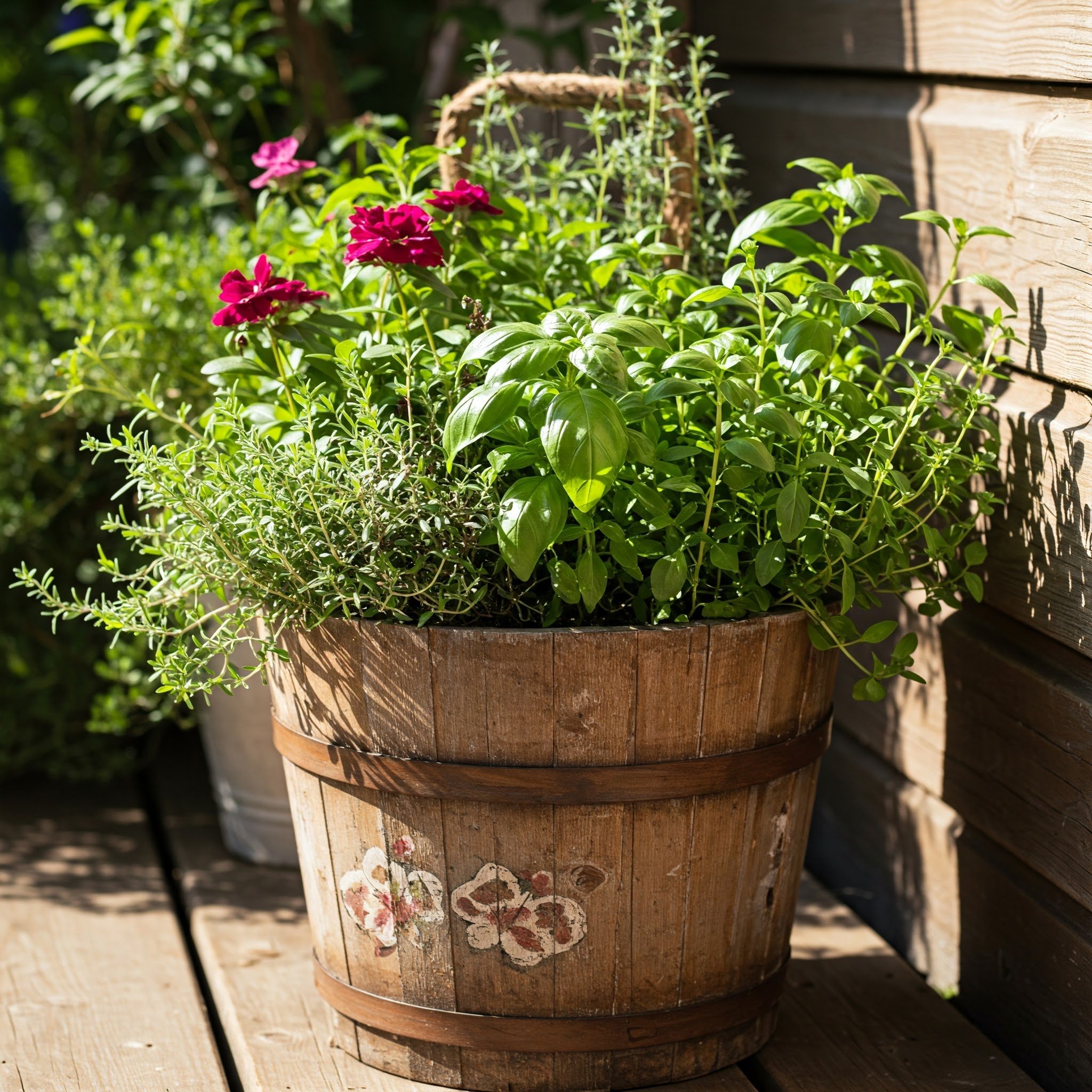Are Mums Perennials? What You Need to Know
Are mums perennials? Learn all about this popular fall flower, whether they come back year after year, and how to care for them to thrive in your garden. Get expert tips on growing and maintaining mums!
If you've ever wandered through a garden center in the fall, you’ve probably seen vibrant, colorful chrysanthemums, or “mums,” filling the aisles. These cheerful flowers are beloved for their abundance of blooms and ability to brighten up any garden or porch. But there's one big question on many gardeners' minds: Are mums perennials? Are they a flower that can return year after year, or are they just a seasonal bloom to enjoy and forget? Let’s dig into this mystery and explore everything you need to know about mums, their life cycle, and how to care for them.
Whether you’re a seasoned gardener or a newbie looking to add a bit of color to your space, this guide will clear up any confusion and give you the knowledge to make the most of your mums.
Are Mums Perennials? The Basics
Before we dive into the specifics, let’s answer the question that’s been on your mind: Are mums perennials? The short answer is: It depends.
While mums are generally grown as annuals in many areas, they are technically perennials in certain climates. Let’s break it down further:
What Does "Perennial" Mean?
First, it’s helpful to understand the term "perennial." Perennials are plants that live for more than two years, blooming and growing each season. They typically flower in specific seasons but come back year after year, provided they are well cared for. So, if you’re growing a true perennial, you don’t need to plant it again every season.
The Truth About Mums
Chrysanthemums, or mums, can be either perennials or annuals, depending on how they’re grown and where they are planted. In warm climates (USDA hardiness zones 5 to 9), mums can survive the winter and return the following year, making them true perennials. However, in cooler climates, mums are often treated as annuals because they struggle to survive the cold temperatures and frost. So, to answer the question: Are mums perennials? In some areas, yes—but not everywhere.
How to Grow Mums as Perennials
If you’re in the right climate, mums can be wonderful perennial plants that grace your garden year after year. But growing mums as perennials requires a little more care and attention than simply planting them and waiting for them to bloom.
1. Choose the Right Variety
Not all mums are created equal. If you’re hoping to grow mums that will come back every year, it’s essential to choose a perennial variety. Look for mums that are labeled as hardy or perennial mums. These types are bred specifically to survive in cooler climates and come back each year.
2. Planting in the Right Spot
To give your mums the best chance of thriving as perennials, it’s crucial to plant them in the right location. Here’s what to keep in mind:
Full Sun: Mums thrive in full sun, so choose a spot that gets at least six hours of direct sunlight daily. More sunlight encourages healthier growth and abundant blooms. Planting mums in a sunny location ensures they stay vibrant and showcase their best color throughout the growing season.
Well-Drained Soil: Ensure mums are planted in well-drained soil, as they dislike soggy roots. Avoid low-lying areas where water tends to collect, which can lead to root rot. Choose a spot with good drainage to keep your mums healthy and thriving, producing vibrant blooms throughout the season.
Space to Grow: Give mums ample space to spread and grow, as overcrowding can hinder airflow and invite disease. Proper spacing ensures healthier plants and abundant blooms. Allow enough room between each plant to promote good air circulation, reducing the risk of fungal issues and encouraging vibrant, thriving mums.
Tip:
When planting mums in containers, choose pots with proper drainage holes to prevent waterlogging. Use a high-quality potting mix to provide the nutrients and support mums need to thrive. Proper drainage and soil quality are essential for healthy growth and vibrant blooms, ensuring your container mums look their best.
How to Care for Mums to Keep Them Coming Back
Now that we know the answer to “Are mums perennials?,” let’s talk about how to ensure they stay that way. Mums need a little more attention than some other perennials, but with the right care, they can flourish year after year.
3. Watering Mums Properly
Mums don’t like to be too dry, but they also don’t like to sit in soggy soil. The key is balance! Water your mums regularly, but be sure not to overwater them. Aim to keep the soil consistently moist, but not drenched. During dry spells, you may need to water more frequently.
Tip:
Water mums in the early morning to allow the foliage to dry out during the day. This practice helps prevent fungal diseases and keeps your plants healthy. Ensuring leaves stay dry minimizes the risk of moisture-related issues, promoting vibrant blooms and robust growth throughout the season.
4. Fertilizing Mums
Fertilizing your mums is crucial for healthy growth and vibrant blooms. Mums are heavy feeders, especially when they’re growing in the spring and summer. Use a balanced, slow-release fertilizer in the spring when new growth starts. You can also use a liquid fertilizer during the growing season for an extra boost.
Tip:
Avoid fertilizing mums late in the season, as it promotes tender growth that might not withstand winter conditions. Focus on early-season feeding to strengthen the plants for colder months. Proper timing ensures your mums are hardy, healthy, and better prepared to thrive through winter and bloom again next year.
5. Mulching to Protect Mums in Winter
If you live in a colder climate, mulching is essential for protecting your mums during the winter months. After the first frost, mulch around the base of the plants to insulate the roots and prevent them from freezing. A 3- to 4-inch layer of mulch, such as shredded leaves or straw, will do the trick.
Tip:
In early spring, remove the mulch to give new growth room to emerge. Leaving too much mulch can block sunlight and air, hindering the plant’s ability to thrive. Clearing away excess mulch ensures a healthy start to the season and promotes robust growth and vibrant blooms for your mums.
6. Deadheading Mums
Deadheading is the practice of removing spent blooms to encourage new flowers and prevent the plant from putting energy into seed production. By removing faded flowers, you help the plant focus on producing fresh blooms, keeping the garden looking tidy and vibrant.
When to Prune Mums for Optimal Growth
Another question that often comes up for gardeners is when to prune mums. Pruning your mums properly is crucial to keeping them healthy and encouraging new growth. Here’s how to go about it:
7. Early Spring Pruning
Prune mums in early spring as new growth appears. Remove dead or damaged stems and trim the plant back to about 6 inches above the ground. This encourages the plant to focus its energy on developing fresh, healthy growth. Proper pruning not only promotes a fuller, more vigorous plant but also sets the stage for abundant blooms later in the season, ensuring your mums thrive throughout the year.
8. Pinching Back
To promote a bushier, fuller mum, pinch back the growing tips in early summer. This simple technique encourages branching, preventing the plant from becoming tall and spindly. Regular pinching also helps reduce legginess, resulting in a more compact and attractive plant. By redirecting the plant’s energy into producing new branches, you’ll enjoy a fuller shape and an abundance of blooms later in the season.
Conclusion
Are mums perennials? Absolutely, with the right care! Growing mums as perennials can be a rewarding experience. Whether you're planting them in the ground or in containers, proper planting, watering, and maintenance will ensure that they bloom year after year, brightening up your garden with their vibrant colors. With the tips and tricks outlined here, you’ll be well on your way to a thriving garden full of beautiful, perennial mums. Happy gardening!
Frequently Asked Questions
1. How long do mums live?
Hardy mums can live for several years if cared for properly, though they may not always bloom as vigorously after the first few seasons. With good care, they can last a decade or more!
2. Can mums survive in pots?
Yes! Mums can be grown in containers, but you’ll need to make sure the pots have good drainage and provide plenty of sunlight and regular watering.
3. Do mums require a lot of maintenance?
Mums are relatively low-maintenance, but they do need regular watering, fertilizing, and pruning to keep them healthy and blooming.
4. When should I plant mums in the ground?
The best time to plant mums is in the spring, after the last frost, or in early summer, so they have time to establish their roots before winter.
5. Why do my mums not come back?
If your mums don’t come back, it could be due to frost damage, improper planting, or them not being hardy in your region. Be sure to choose the right variety for your climate.

































